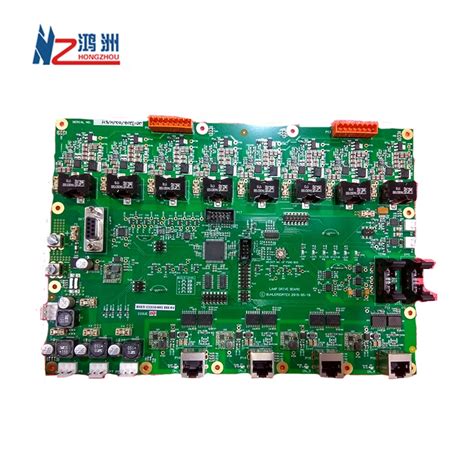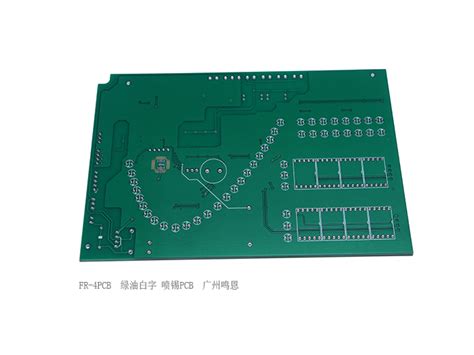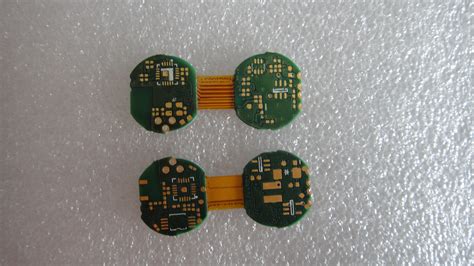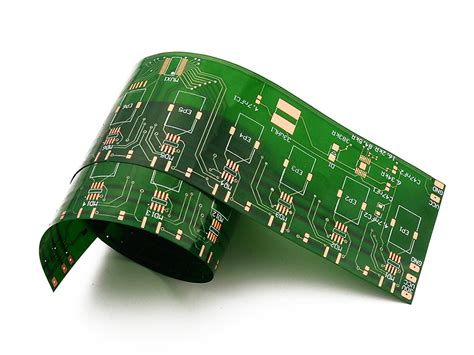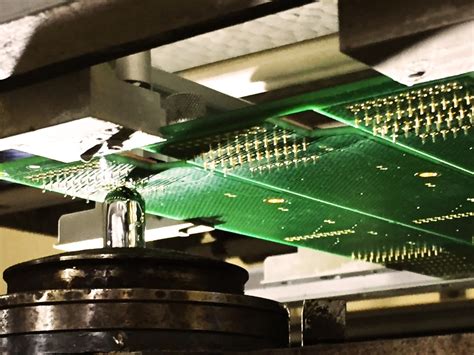Choosing the Right JST Connector for Your PCB Projects

Key Takeaways
When selecting a JST connector for your PCB projects, it is vital to remember that compatibility and pin configuration are paramount. You should always verify that the JST connector you choose aligns with the specifications required by your printed circuit board (PCB) design. Given that PCB manufacturing involves various materials and techniques, understanding the nuances of PCB manufacturing cost can significantly influence your decision. For instance, opting for a less common pin configuration may lead to higher costs and longer lead times from PCB manufacturing companies. Beyond costs, consider the applications of the connectors; different environments may subject connections to various stresses, so choose a connector rated for your specific application.
Moreover, when connecting a JST connector, one common oversight is not accounting for proper soldering techniques, which can affect reliability in high-usage settings. For a successful PCB manufacturing business, maintaining quality in every aspect—from selection to assembly—is crucial.
“The best connectors not only enhance connectivity but also elevate the overall performance of your project.”
In essence, being mindful of these considerations will ensure that you make an informed choice in the selection process and confidently face any challenges during assembly or operations.

Choosing the Right JST Connector: An Overview
When embarking on your PCB projects, selecting the right JST connector is crucial for ensuring effective communication and power distribution. Various factors play a significant role in making this choice, and understanding these elements can enhance the overall performance of your project. First and foremost, it’s vital to consider compatibility with the materials you are using, including your specific PCB manufacturing requirements. Different PCB manufacturing companies may offer diverse types of connectors, each tailored to suit specific applications. This variance can affect not just the ease of integration but also the long-term reliability of connections.
Also, pay attention to pin configuration; certain projects may require connectors with different pin counts or layouts. Incorrect configurations can lead to difficulties in assembly and functionality issues down the line, influencing both performance and potential pcb manufacturing cost. Finally, it is worth evaluating how your pcb manufacturing business objectives align with connector choices; secure and efficient connections will support scalability as your projects grow. By carefully weighing these considerations, you can ensure that you select a JST connector that optimally meets your needs.

Understanding JST Connector Compatibility
When embarking on your PCB manufacturing projects, understanding JST connector compatibility is crucial for ensuring optimal performance and reliability. There is a wide variety of JST connectors available, each designed for specific applications. To ensure that you select the right connector type for your project, first consider the specifications of your PCB. Key factors include the voltage requirements, current ratings, and the physical dimensions of both the connectors and the available footprint on the PCB.
In addition to these specifications, you should also think about how your PCB manufacturing company designs align with different JST connector variants. For example, some connectors are designed for high-density applications and can accommodate smaller pin count configurations, while others are better suited for larger connections that may require a sturdier fit. It’s essential to verify that your chosen connector not only fits physically but also meets the electrical requirements dictated by your design.
Moreover, considering JST connector compatibility during your design phase helps eliminate potential pitfalls during assembly or operation phases. Keep in mind that mismatched connectors can lead to increased PCB manufacturing costs, as revisions or replacements may be necessary if incompatible parts are used.
To assist in choosing the right connectors, reviewing a table of common JST connector types alongside their specifications can prove beneficial:
| Connector Type | Pin Count | Current Rating | Suitable Applications |
|---|---|---|---|
| JST XH | 2-16 | 3A | General-purpose connections |
| JST PH | 2-11 | 2A | Compact devices |
| JST GH | 5-20 | 1A | Space-restricted applications |
| JST EH | 2-6 | 3A | Lighting systems and sensors |
By taking these factors into account and ensuring compatibility with your chosen PCB manufacturing business, you’ll enhance both efficiency and durability in your projects. This attention to detail can save you time and money while significantly improving the functionality of your final product.

Key Factors in Pin Configuration
When selecting a JST connector for your PCB projects, one of the primary considerations is the pin configuration. The arrangement and number of pins directly affect the functionality and compatibility of the connector with your board. Each pcb manufacturing process may have its specifications regarding pin layout, so it’s essential to ensure that your selected connector aligns with the design of your PCB. Many pcb manufacturing companies provide detailed datasheets that illustrate pin configurations; these documents can serve as a valuable reference when making your decision. Additionally, consider the pcb manufacturing cost involved, as connectors with specific configurations might vary in price depending on their complexity and demand. You’ll want to choose a JST connector that not only meets your technical requirements but also fits within your project’s budget constraints. When evaluating pin configuration, remember that compatibility with other components on your board is crucial for efficient performance, thus avoiding the pitfalls of mismatched connectors that can lead to failure in delivery or functionality in production. By prioritizing these factors, you can ensure a more reliable and effective outcome for your pcb manufacturing business projects.
Applications of JST Connectors in PCB Projects
JST connectors have become an essential part of many PCB projects due to their versatility and reliability. These connectors are commonly used in various applications, including consumer electronics, automotive systems, and industrial equipment. When you consider pcb manufacturing, understanding the specific requirements of your application is crucial. For instance, if you’re working with compact electronics, low-profile JST connectors can save valuable space while providing a secure connection. Additionally, the pcb manufacturing companies you choose might influence your access to specific types of JST connectors that best fit your project’s needs.
Moreover, you should consider the environmental factors where your device will operate. If your project is destined for outdoor or high-vibration environments, selecting connectors with appropriate sealing or strain relief features can enhance durability and performance. The pcb manufacturing cost may vary depending on the type of connector used and other components involved; therefore, it’s wise to evaluate how different JST connectors align with your budget while still maintaining quality.
Ultimately, using JST connectors can significantly improve connection reliability in various applications. Still, ensuring you select the right type based on compatibility and requirements is essential to the success of your pcb manufacturing business. Remember that these choices impact not only production efficiency but also long-term product reliability and customer satisfaction in the market.
Common Mistakes When Selecting JST Connectors
Selecting the right JST connector for your PCB projects can be challenging, especially if you are not aware of common pitfalls. One frequent mistake is ignoring compatibility with your specific PCB layout. Before finalizing your choice, confirm that the connector’s dimensions and pin spacing align with your design to avoid costly errors down the line. Another common oversight is failing to consider the pin configuration adequately. Misconfigurations may lead to mismatched connections and non-functional circuits, which can escalate PCB manufacturing costs significantly. Additionally, neglecting to account for your project’s specific requirements—such as environmental factors or current ratings—can lead to unreliable connections that compromise the performance of your electronics. Engaging with reputable PCB manufacturing companies can provide you with insights on how different JST connectors perform under various conditions. Lastly, always verify that the chosen connectors meet the standards needed for your application; a lapse in this area may not only affect performance but could also jeopardize your entire PCB manufacturing business due to potential recalls or replacements. Therefore, take a moment to evaluate all these aspects thoroughly before proceeding with your JST connector selection process.
Tips for Soldering JST Connectors to Your PCB
When it comes to soldering JST connectors to your PCB, attention to detail can make all the difference in ensuring a solid and reliable connection. Before starting the process, it’s essential to prepare your workspace. Ensure that you have a clean, well-lit area with all necessary tools at hand, including a soldering iron, solder, and some flux. When selecting your solder, consider using a thin gauge that is compatible with your connector specifications; this can help in achieving precise joints without adding excess bulk.
As you begin the process, make sure to heat the connections adequately but not excessively. It’s vital that you maintain the correct temperature to avoid damaging either the JST connector or the PCB itself. First, apply a small amount of flux to ensure better solder flow, which helps in creating a more robust connection. Next, carefully position your plug in place and let it rest for just long enough for both the pin and PCB pad to reach an optimal soldering temperature before introducing solder.
Avoid applying too much solder; excess material can result in cold joints or short circuits, undermining the integrity of your project and potentially escalating PCB manufacturing costs later if repairs are necessary. Consider using pre-tinned connectors if you’re new to this process; they simplify the soldering method by allowing for easier application while ensuring excellent heat transfer.
Finally, after soldering each connector pin, visually inspect your work under magnification if possible. Look for cold joints or any irregularities that could signal issues down the line. Wong connectors not only pose challenges during functionality tests but may also complicate relations with PCB manufacturing companies that focus on quality control in their processes. By following these tips closely, you can improve both immediate performance and long-term reliability of connections in your PCB manufacturing business.

Ensuring Reliable Connections: Best Practices
When working with JST connectors for your PCB projects, ensuring reliable connections is paramount. One of the first steps to achieving this reliability is to select connectors that are compatible with your specific application; understanding the particular requirements of your board will guide you in choosing the right connector type. Additionally, pay close attention to the pin configuration. Mismatched pin configurations can lead to connection failures, which can incite delays and increase your pcb manufacturing costs. It’s advisable to consult with various pcb manufacturing companies to assess not only the types of connectors they recommend but also how these connectors integrate into their production process.
To further enhance the reliability of your connections, consider standard practices in soldering techniques. Using a tempered soldering iron and high-quality solder can minimize thermal damage to both the connector and PCB. Moreover, ensuring clean and well-prepared surfaces is vital for achieving a good bond. If you are venturing into a pcb manufacturing business, establish robust quality control measures after soldering connectors to avoid common issues such as cold joints or accidental shorts. By integrating these practices, you will not only contribute to better reliability but also potentially reduce the overall costs associated with repairs or replacements down the line, which is essential for sustaining a competitive edge in pcb manufacturing.
Troubleshooting Common Connector Issues
When working with JST connectors in your PCB projects, you may encounter several common issues that can affect the performance and reliability of your connections. One frequent problem is improper pin alignment. Ensuring that the pins are seated correctly is crucial, as misalignment can lead to poor electrical contact and intermittent failures. Additionally, inspect the solder joints; inadequate soldering can cause connections to be weak or fail altogether. If you’re working with different PCB manufacturing companies, it’s wise to confirm that the connectors meet the relevant specifications for your project. Another issue can arise from using incompatible connector types or wrong pin configurations, which may result in damaged components and increased PCB manufacturing costs. To avoid these pitfalls, familiarize yourself with the exact requirements of your application and double-check compatibility before proceeding. Remember, it’s essential to adhere to best practices during PCB assembly to ensure a smooth connection process and avoid costly mistakes in your PCB manufacturing business. By taking these steps and maintaining attention to detail, you can resolve issues quickly and enhance the overall functionality of your projects.
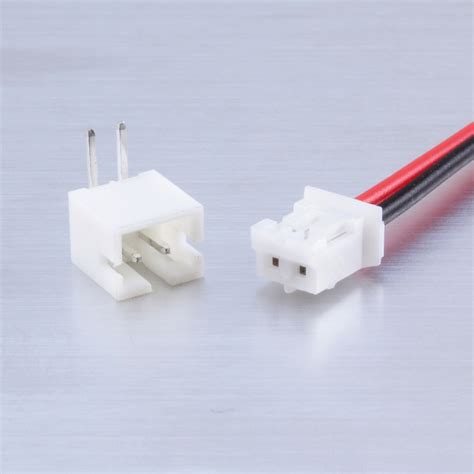
Conclusion
Choosing the right JST connector is crucial for the success of your PCB projects. By understanding factors such as compatibility, proper pin configuration, and specific applications, you can ensure that your connection remains robust and effective. When diving into the intricacies of pcb manufacturing, it’s essential to keep in mind that the choices you make regarding connectors can impact the overall efficiency and cost of your project. Engaging with reputable pcb manufacturing companies will provide valuable insights into which JST connectors best suit your needs, while also considering the potential impact on pcb manufacturing costs. Moreover, a well-informed decision on connector selection can streamline your pcb manufacturing business, enhancing product reliability and performance. By prioritizing quality connectors, you are not just investing in components; you are laying the foundation for successful electronic applications and long-lasting designs.
FAQs
What is a JST connector and why is it commonly used in PCB projects?
A JST connector is a type of electrical connector that is compact and lightweight, making it an ideal choice for various PCB applications. Its design ensures secure connections, which are crucial for maintaining electrical integrity in your projects.
How do I determine the compatibility of a JST connector with my PCB?
To ensure compatibility, you need to examine the pin configuration and electrical requirements of both the JST connector and your PCB. Checking the manufacturer’s specifications will guide you in selecting a connector that meets your project’s needs.
What are the common pitfalls when selecting JST connectors for PCB manufacturing?
Common mistakes include overlooking the pin count, ignoring current ratings, and failing to consider size constraints. It’s important to research these factors to avoid issues during PCB manufacturing, especially with regard to fitting connectors onto your boards.
How can one ensure reliable connections with JST connectors in PCB projects?
Adhering to proper soldering techniques, using appropriate tools, and ensuring clean surfaces can significantly enhance connection reliability. Additionally, choosing connectors from reputable PCB manufacturing companies will affect the reliability of your project.
What factors influence the cost of JST connectors in PCB manufacturing?
The PCB manufacturing cost can be influenced by factors such as the quantity ordered, materials used, and complexity of designs. Bulk purchases often lead to reduced costs per unit, benefiting any PCB manufacturing business looking for budget-friendly solutions.


